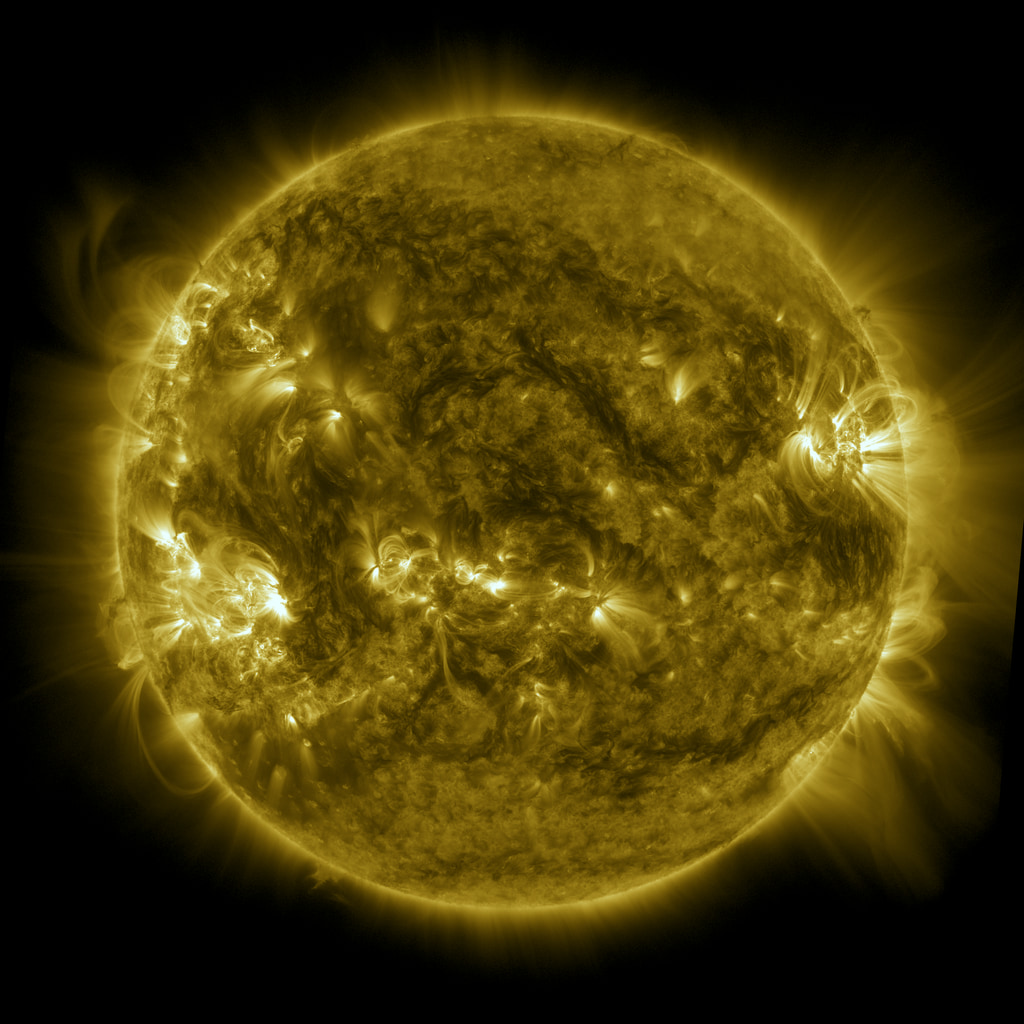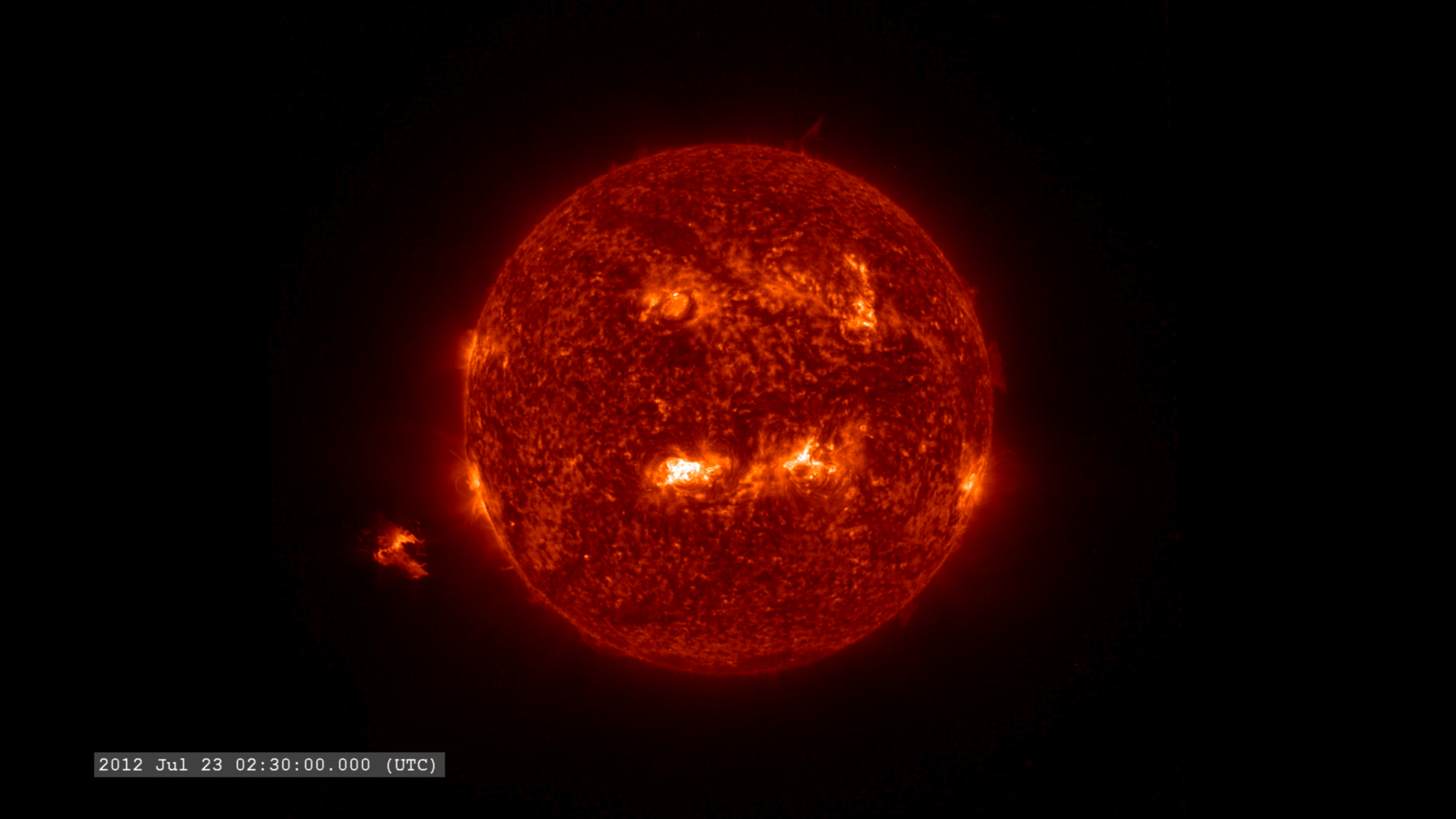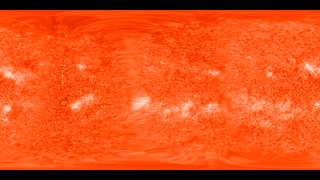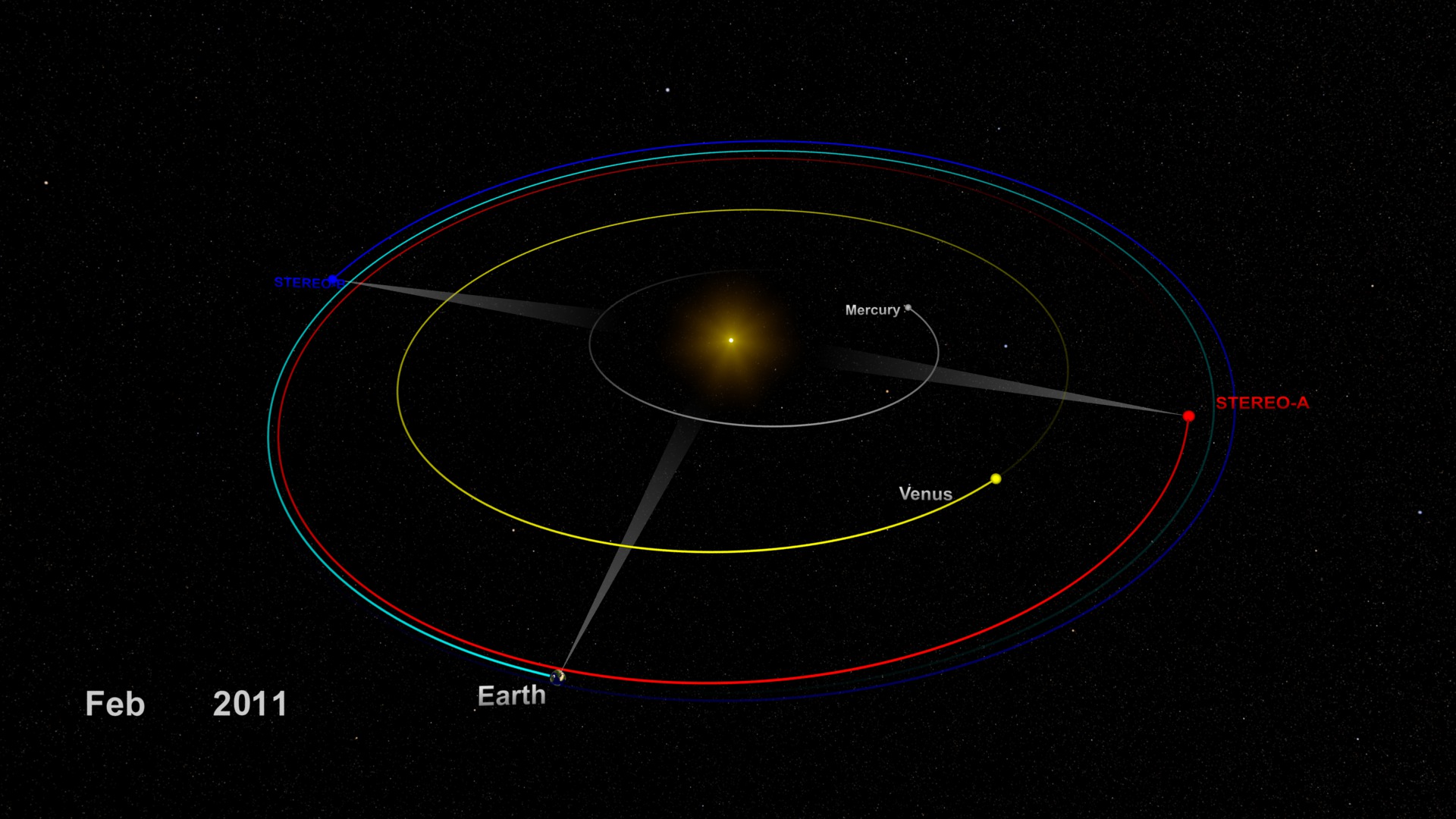STEREO-A Returns by Earth
The Solar Terrestrial Relations Observatory (STEREO) mission was launched on October 25, 2006, with the purpose of tracing the flow of energy and matter from the Sun to Earth. The STEREO mission began with two spacecraft: STEREO-A and STEREO-B. Each was launched into Sun-orbiting trajectories - STEREO-A moving ahead of Earth, and STEREO-B moving behind Earth (STEREO's Routes to Solar Orbits).
In mid-August 2023, the still-operational STEREO-A (STEREO-B went offline in October 2014) will pass Earth for the first time since its launch 17 years ago. Like race cars driving different speeds around a circular track, STEREO-A is traveling slightly faster than Earth around the Sun. After launch, STEREO-A pulled ahead of Earth and extended its lead a little bit more with each orbit. Now, STEREO-A’s lead is so great that it is catching up to Earth from behind and is about to “lap” Earth, having completed 18 circuits around the Sun while Earth completed just 17.
A view of the orbit of STEREO-A relative to Earth from mid-June 2023 to mid-October 2023, as it passes Earth. The camera is anchored on the Earth-Sun line so Earth and the Sun appear fixed while the distant stars appear to move around the camera. This movie starts with a wide view of the inner solar system with STEREO-A and Earth marked. The camera then zooms in to a closer view of Earth showing Solar Dynamics Observatory (SDO) orbiting Earth, the heliophysics missions orbiting the L1 Lagrange Point (the green cross), and the orbit of the Moon.
The STEREO mission has accomplished a number of scientific feats, including the following:
1) The first stereo imagery of the Sun with the Extreme UltraViolet Imager (EUVI) instruments
- First 3-D Stereo from STEREO: EUVI 171 Angstroms (Full Disk View)
2) Tracking a coronal mass ejection from the Sun to Earth
- From the Sun to the Earth: CME Enhancement
3) First 360-degree coverage of the solar 'surface'
- STEREO's Ongoing Mission to See the Sun from All Sides
- STEREO+SDO: Around the Sun for 81 Days
- STEREO Achieves Full Solar Coverage: All the Sun. All the Time
4) Multiple views of very large coronal mass ejections
- As Seen by STEREO-A: The Carrington-Class CME of 2012
- As Seen by STEREO-B: The Carrington-Class CME of 2012
5) Identified a dust ring at the orbit of Venus
- Venus Dust Ring
6) Participated in many coordinated observations with other missions
- The CME Heard 'Round the Solar System
- Coordinated Heliosphere - How Solar Missions Work Together
- The Many Eyes on the Parker Solar Probe Perihelion (February 2022)
A view of the orbit of STEREO-A relative to Earth from mid-June 2023 to mid-October 2023 as it passes Earth. The camera is fixed on the Earth-Sun line so Earth and Sun appear fixed while the distant stars appear to move around the camera.
A view of the orbit of STEREO-A relative to Earth from mid-June 2023 to mid-October 2023 as it passes Earth. The camera is fixed on the Earth-Sun line so Earth and Sun appear fixed while the distant stars appear to move around the camera. In this movie, a triangular marker appears when STEREO-A is within a four-degree angle of Earth relative to the Sun. In this range, it is practical to construct stereo imagery using STEREO-A and near-Earth solar observing missions.
For More Information
See NASA.gov
Credits
Please give credit for this item to:
NASA's Scientific Visualization Studio
-
Visualizer
- Tom Bridgman (Global Science and Technology, Inc.)
-
Writer
- Miles S. Hatfield (Telophase)
-
Technical support
- Laurence Schuler (ADNET Systems, Inc.)
- Ian Jones (ADNET Systems, Inc.)
Release date
This page was originally published on Tuesday, August 22, 2023.
This page was last updated on Monday, January 6, 2025 at 12:44 AM EST.
Missions
This page is related to the following missions:Series
This page can be found in the following series:Datasets used
-
DE 431
ID: 985Planetary ephemerides SPICE kernel
See all pages that use this dataset
Note: While we identify the data sets used on this page, we do not store any further details, nor the data sets themselves on our site.

![This visualization opens with a top-down view, then transtions to an oblique view of the inner solar system with the various solar-observing missions conducting coordinated observations of the plasma environment. This version displays the imaging instrument camera frustums and solar magnetic field alignments - the 'glyph' version. A version with just the orbits, no 'glyphs' is available in the [Download Options] menu.](/vis/a000000/a004900/a004970/SolarSynergiesPlus.Encounter2022FebTop2Side.HAE.AU.glyphs_CRTT.HD1080.01300_print.jpg)










